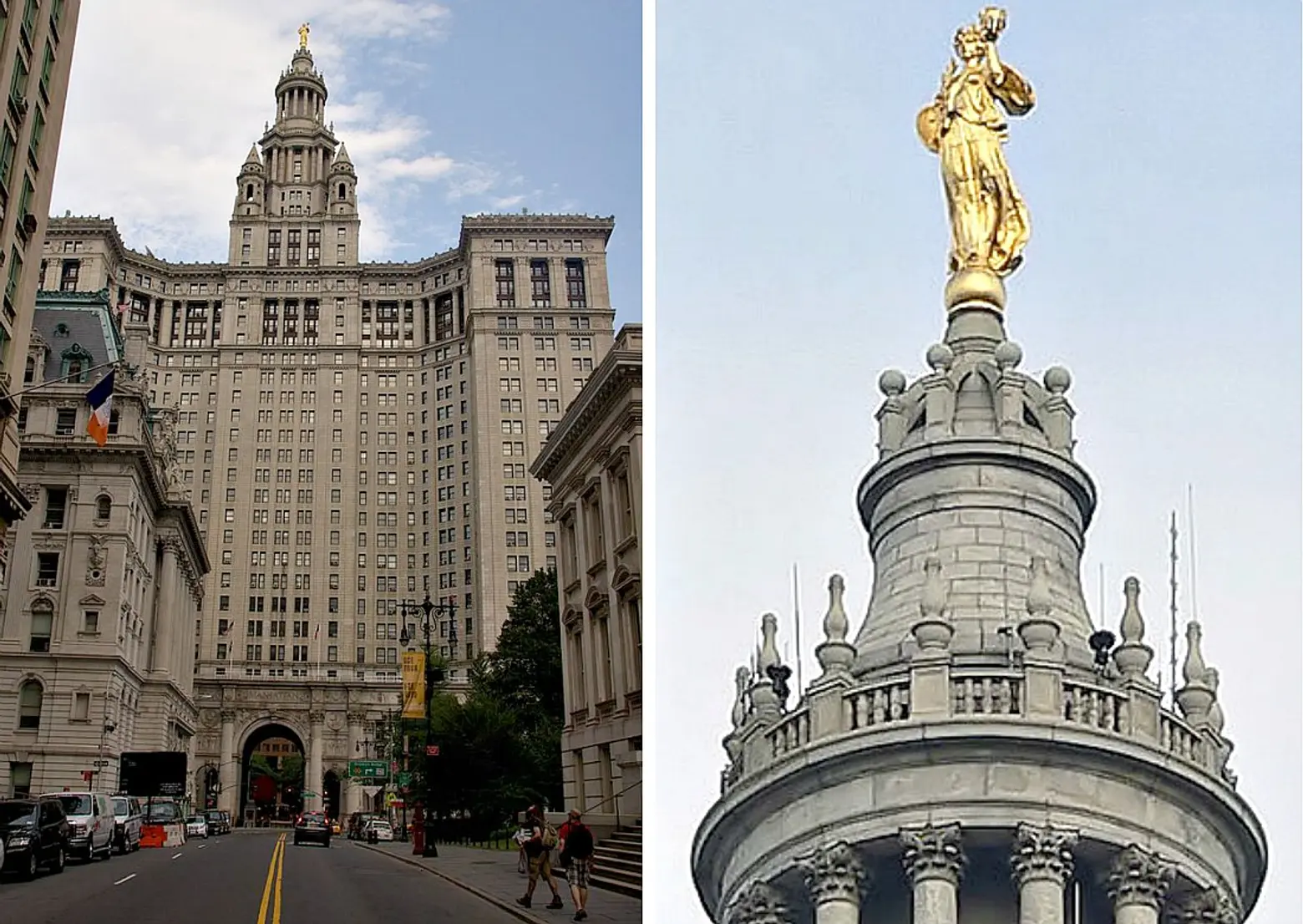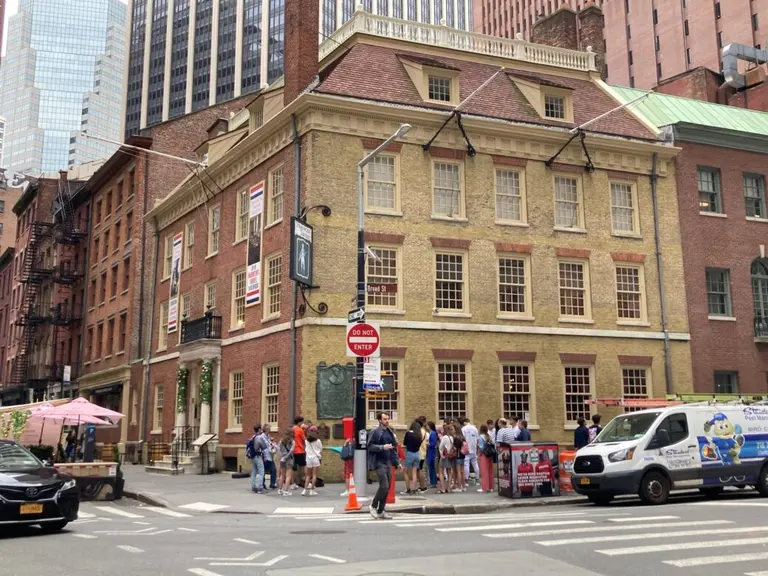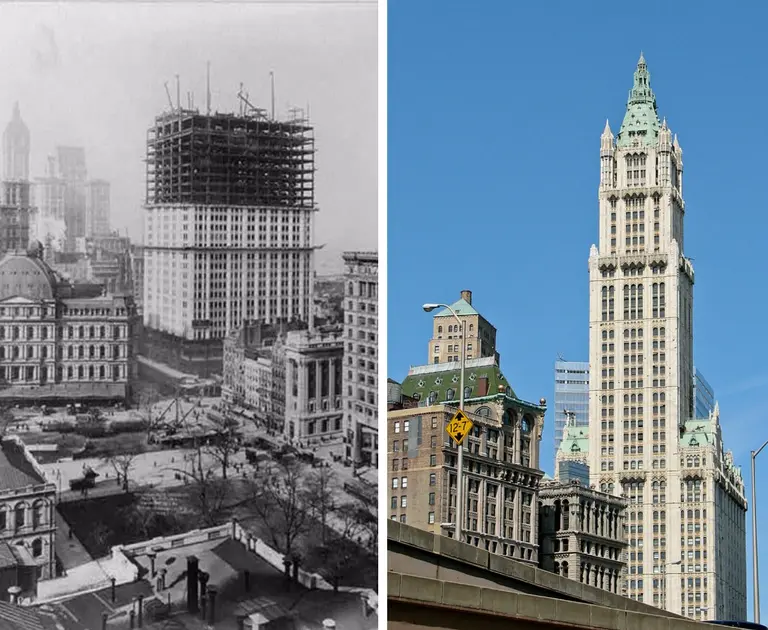VIDEO: The Fascinating History of the Manhattan Municipal Building

The Manhattan Municipal Building toward the end of construction in 1913, via Shorpy
When we think of the city’s early skyscrapers, landmarks like the Woolworth Building and Flatiron Building usually come to mind. But there’s an equally fascinating and beautiful icon that often gets overlooked–the 1914 Manhattan Municipal Building. One of New York’s first skyscrapers, the 580-foot Beaux Arts masterpiece influenced civic construction throughout the country and served as the prototype for Chicago’s Wrigley Building and Cleveland’s Terminal Tower, among others.
A new video from Blueprint NYC (produced by the Office of NYCMedia) takes us into this historic structure, discussing everything from the reason for construction (after the 1898 consolidation of the five boroughs, there was a need for increased governmental office space) to interesting factoids (the building was designed from a rejected sketch of Grand Central Terminal Station) to the turn-of-the-century innovations that made this unique structure possible.
When New York realized it needed a city-owned building to house its governmental offices, they invited twelve architectural firms to submit designs. William Kendall of famed firm McKim, Mead and White was chosen as the winner, and construction began in 1909, lasting five years. It was the firm’s first skyscraper commission.

The façade is adorned with various sculptural and relief ornamentation akin to Roman architecture with the Arch of Constantine serving as the inspiration for the building’s central arch, large enough that automobile traffic once passed through it. The five cupolas represent the five boroughs. It was also the first building to incorporate a subway station, and it was modeled on the grand arched entrance of the Palazzo Farnese in Rome and outfitted with beautiful vaulted Guastavino tiles. At the top of the building is the statue of Civic Fame, a gilded copper figure designed by Adolph A. Weinman. Standing at 25 feet, it is the third-largest statue in the city.

Guastavino tiles in the South Concourse’s open-air arcade, which leads to the subway entrance
From the outset there were major construction hurdles. As Untapped recounts, “A thick sheet of bedrock was located 209 feet below the building’s intended site. The majority of skyscrapers in the city are built above a thick sheet of granite directly underneath the city’s surface. Siting the Manhattan Municipal Building where the bedrock sloped downward proved to be a risky move. In order to remedy this issue, construction workers used pressurized water cylinders to excavate the dirt below and replace it with concrete.”
Today, the landmarked Manhattan Municipal Building boasts 2,000 windows, 73 restrooms and 33 elevators. It houses over a dozen city agencies and 3,000 employees.
[Via Untapped]
RELATED:
- Palaces for the People: Where to See the Timeless Tiled Works of Guastavino in NYC
- Terra Cotta in New York City: Beautiful Buildings Adorned in Ceramic
- Accounting for the Strange Faces That Adorn the Woolworth Building (And Other Fun Facts)
All photos via Wiki Commons unless otherwise noted
Interested in similar content?
Leave a reply
Your email address will not be published.































loved seeing it yesterday on public TV! what a feat!